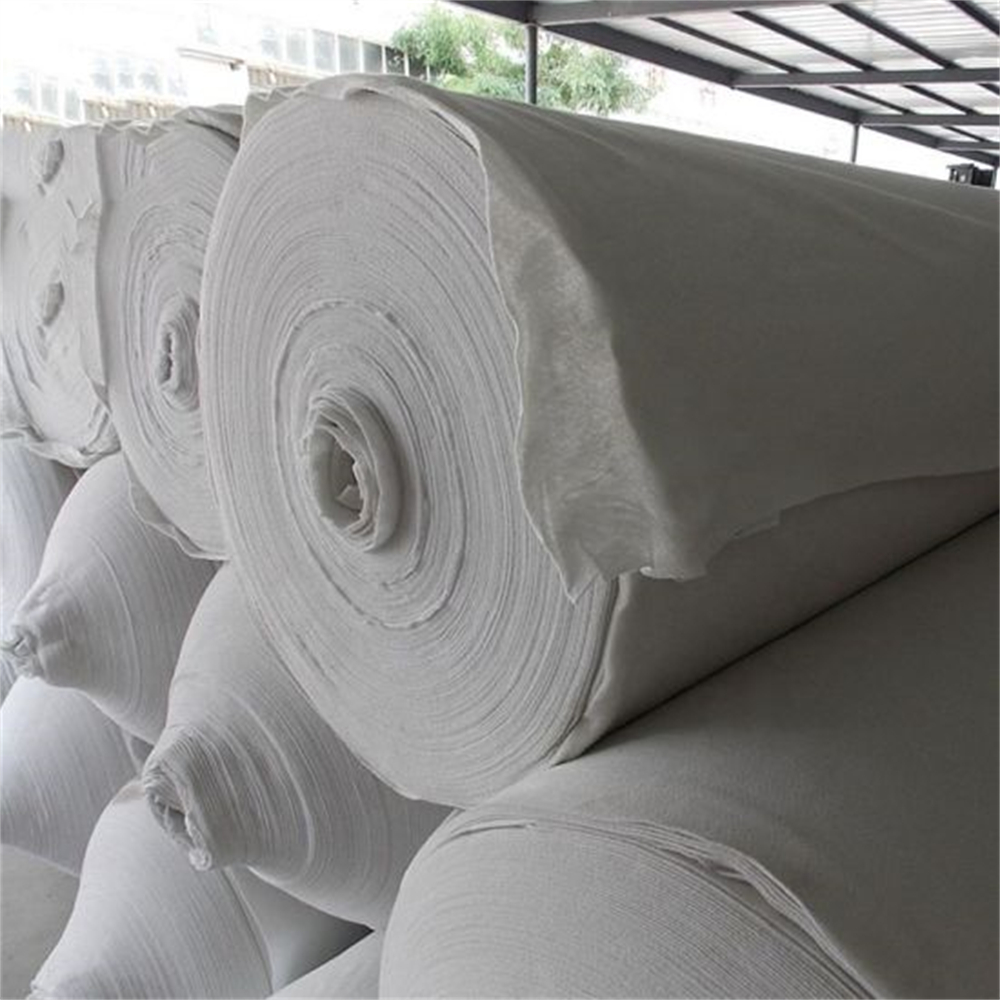What is the water permeability of geotextile?
The water permeability of the geotextile refers to the ability of water to pass through the geotextile. Water permeability is an important performance indicator for evaluating geotextiles and is crucial for many geotechnical applications.
Generally speaking, the water permeability of geotextile is closely related to its material and structure. The following are some factors that affect the water permeability of geotextiles:
Pore size: Geotextiles usually have an open-pore structure or mesh shape. The size of the pores will directly affect the speed of water passing through the geotextile. The larger the pore size, the better the water permeability.
Porosity: The porosity of geotextile refers to the volume proportion of pores in the geotextile. The higher the porosity, the better the water permeability.
Material properties: The material type and properties of the geotextile have an impact on water permeability. Some materials inherently have good water permeability, such as polypropylene nonwovens. In addition, the water permeability performance of geotextile can also be improved through special treatment methods, such as adding water permeability additives.
Thickness: The thickness of the geotextile also affects water permeability. Thinner geotextiles usually have better water permeability.
It should be noted that different types of geotextiles may have differences in water permeability. For example, some geotextiles are designed for filtration and anti-seepage, and their water permeability may be relatively low to achieve the effects of filtration and anti-seepage. Some geotextiles are specifically designed for drainage and protection, and their water permeability is relatively good.
When selecting a geotextile, water permeability should be evaluated based on specific project needs and requirements. If you need better water permeability, you can choose a geotextile with water permeability characteristics or adjust the material and structure of the geotextile to meet the requirements of the project. At the same time, attention should also be paid to the balance with other required properties, such as tensile strength, durability and chemical stability, to comprehensively consider the selection of appropriate geotextiles.
What is the stretchability of geotextile?
The stretchability of geotextile refers to the ability of the geotextile to stretch or deform when subjected to tension. Stretchability is one of the important performance indicators for evaluating geotextiles when they are subjected to stress and deformation in engineering.
The tensile properties of geotextiles are affected by the following factors:
Material Selection: The material type of a geotextile plays an important role in its tensile properties. Common geotextile materials include polypropylene (PP), polyester (PET), etc. Materials with high strength and good ductility generally provide better tensile properties.
Braided structure: The braided structure of the geotextile also affects its tensile properties. A tighter and more uniform weave provides better tensile strength and stability.
Thickness and weight: The thickness and weight of a geotextile will also have an impact on its tensile properties. Thicker geotextiles generally have better tensile properties, while heavier geotextiles often provide higher tensile strength.
Processing: Some geotextiles undergo special processing, such as hot melting or acupuncture, which can improve their tensile properties and increase the tensile stress and deformation they can withstand.
A high-quality geotextile should have good tensile properties and be able to adapt to the stress and deformation in the project without being easily broken or damaged. They can withstand a certain amount of tension during the construction process, maintain stability, and ensure the durability and reliability of the project.

What is the softness of geotextile?
The softness of geotextiles refers to the flexibility and plasticity of geotextiles during application, also known as adaptability. Softness is one of the important indicators for evaluating the ability of geotextiles to adapt to surface morphology and deformation.
The softness of geotextile is affected by the following factors:
Material properties: The material type and properties of geotextile have a great influence on its softness. Some materials are flexible and ductile, such as polypropylene, polyester, etc. These materials can make the geotextile more flexible and plastic, adapting to irregular surface shapes and deformations.
Fiber weave structure: The weave structure of the geotextile also affects its softness. The looser woven structure can make the geotextile softer and more plastic, able to adapt to irregular deformations on the ground surface.
Thickness: The thickness of the geotextile also affects its softness. Thinner geotextiles can more easily bend, fold, and conform to the curved shape of the ground surface.
Softness is an important characteristic of geotextiles in many engineering applications. It enables the geotextile to better adapt to surface terrain changes and engineering deformations, ensuring the stability and reliability of the project. Geotextiles with better flexibility can be bent, folded and adjusted more easily during installation and construction to adapt to special engineering requirements.
Softness is a factor to consider when choosing a geotextile. If greater softness is required in the project, such as in curved terrain, complex geographical conditions or areas with large deformation, you can choose a geotextile type with better softness and determine the appropriate specifications and models according to the specific project requirements. .

